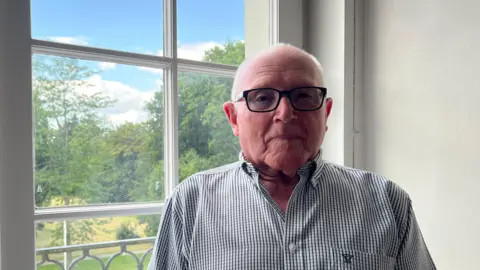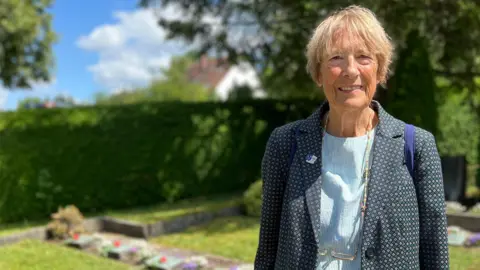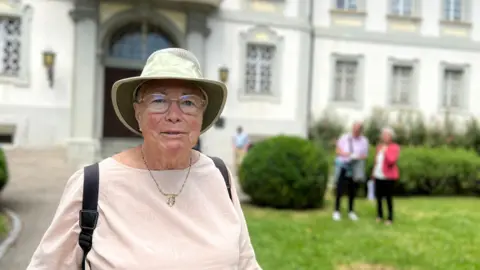Internee back at camp where Hitler Youth trained
 BBC
BBCA Jersey internee said he felt "sadness and joy" when he returned to the spot where he saw the Hitler Youth train outside his internment camp.
Roy Newton was two years old when he was deported to the German town of Bad Wurzach with his family during the Occupation.
The Hitler Youth was a group which introduced children to Nazi ideology and policy.
More than 600 islanders lived behind barbed wires between 1942 and 1945 not knowing if they would ever return home. Some of the people who experienced those times have returned to the town and the castle where they were held to mark the 80th anniversary of their liberation.

Mr Newton is the oldest surviving internee on the visit and was shown around the castle where he slept in a dormitory with many others.
He said "there was barbed wire separating us from the Hitler Youth" and "we could look through and see them training".
Mr Newton added: "It's a privilege to come back here for my parents because they're the ones who took the full brunt of it because they knew what was going on and we didn't, we were just children."
The group has joined friends and family to return to the interment camp as part of the visit organised by the Bad Wurzach Partnerschaft Committee and the St Helier – Bad Wurzach Partnership.

Lola Garvin was eight months old when she was deported with her family and is the chairwoman of the St Helier – Bad Wurzach Partnership.
She placed flowers on some of the graves of Jersey internees who died in the camp in Bad Wurzach.
Ms Garvin said "it's so spiritual" and "the Bad Wurzach people keep the graves beautifully clean, which is so important".
"It meant a lot to also see my grandchildren lay roses too because they came here not knowing what to expect and I think they've understood it so we need to pass on the spirit of peace to the next generation," she added.

Angela Thom was born in the internment camp in 1943 and does not remember growing up there.
But her family would talk about what happened during their time behind barbed wire.
Ms Thorn said: "My brother and one of my sisters remembers going down into a cellar and there were slave workers on their way to another camp and they said it was horrific because you can imagine the state they were in."
She added "it's nice to meet the other internees and hear their stories" as "I don't think I will be coming again because of my age and there's not many of us left".
Follow BBC Jersey on X and Facebook. Send your story ideas to [email protected].
